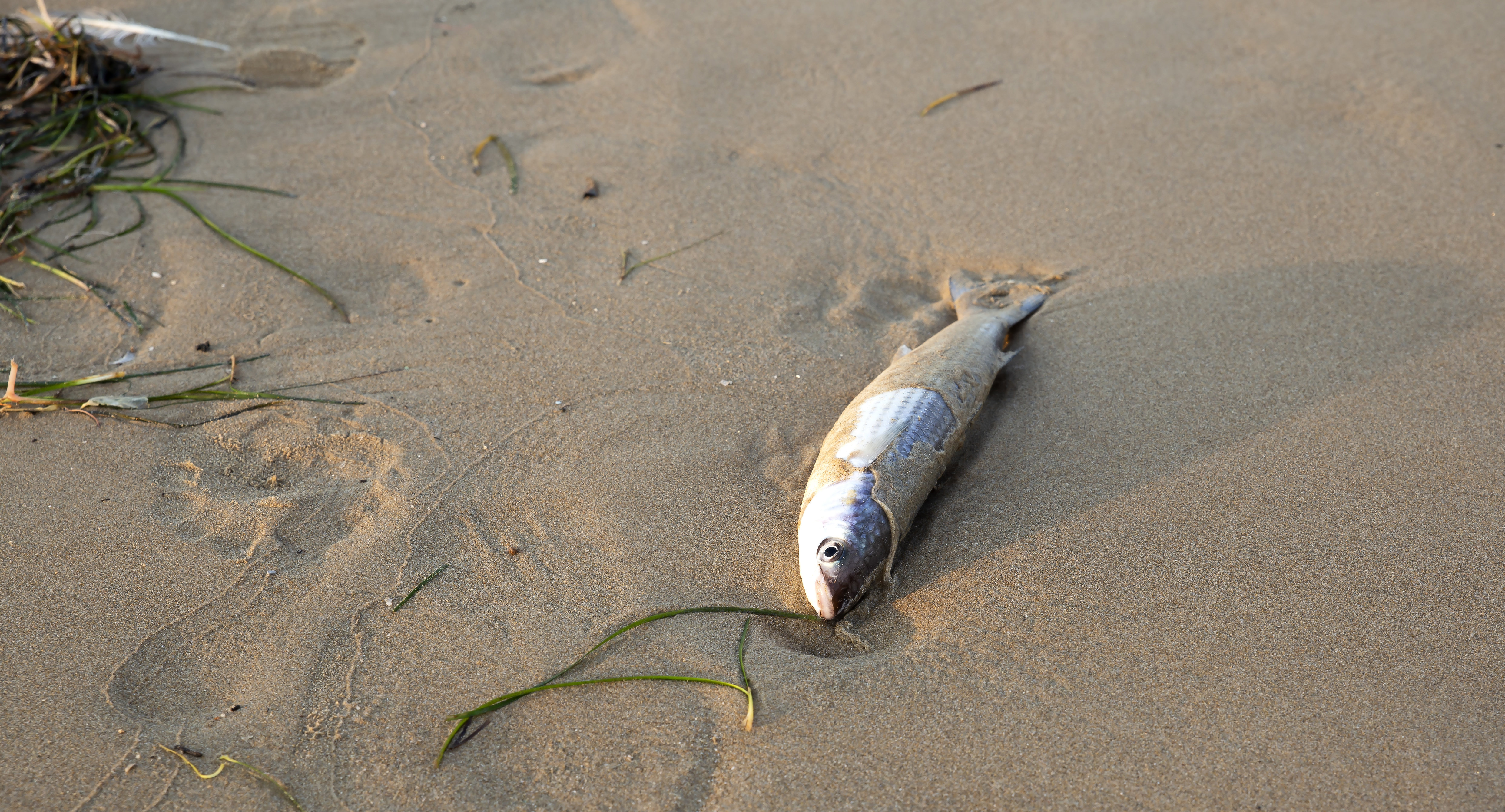You already know that excess muck, weeds, and algae are SOS messages from a lake in trouble. If you have those signs of nutrient overloading, you may also have experienced closed beaches and fish kills. Read on to understand how these lake warning signals are symptoms of low-oxygen environments- and what you can do to respond.
Closed Beaches
A closed beach is a summer bummer. When a sign down by the water says the beach is closed it may be due to dangerous levels of a toxic chemical or pathogen such as salmonella, giardia, campylobacter, cryptosporidium, or even E. coli. These dangerous water-borne organisms can cause illness and flu-like symptoms, fever, congestions, infections, vomiting, and more. Children, the elderly, and people with weakened immune systems are the most vulnerable.Often, a beach will close when sewage enters the lake from combined sewer overflows from malfunctioning sewage treatment plants and septic systems in both urban and rural areas surrounding the lake. When heavy rainstorms occur, sewage processing systems can become overloaded and discharge a mixture of raw sewage and polluted runoff into the watershed and into the lake. These pathogenic bacteria such as e-coli and fecal coliform are anaerobic, so they survive and thrive in low-oxygen environments.
Fish Kills
A fish kill is a serious warning signal from your lake! A thriving fish population, which took decades to develop, can literally disappear overnight and it will take years to rebuild. Although some scientists argue that a massive fish die-off is a one-time event (or a naturally occurring coincidence), the #1 cause of fish kills is oxygen depletion. If you see fish “gulping for air” at the surface of your lake, it’s probably too late.
How Do Lakes Lose Oxygen?
Low oxygen in a lake is a symptom of nutrient overloading. Excessive weeds and algae begin to grow out of control as a result of fertilizers and waste runoff entering the lake. Then, when the dead weeds and algae fall to the bottom (or are killed with chemical dumping treatments), their decomposition depletes the oxygen in the bottom of the lake. But the chemicals such as ammonia, phosphorus, and nitrogen are not broken down, they are released back into the water and fuel new algae blooms and further weed growth.
The more you attempt to kill the weeds and algae, the more their decomposition starves the lake bottom of oxygen.

Restoring a Lake
Our solution solves the root causes of low oxygen by duplicating and accelerating nature’s own mechanisms for oxygenating water and breaking down toxic chemicals. We supply air to the bottom of the lake, lifting the “dead” water from the bottom to the surface where it becomes fully saturated with oxygen. Then, this oxygen-rich water travels back down to the bottom, restoring oxygen to the suffocating lake.

Our proven process has restored over 10,000 acres of lakes with long-lasting results. If you are concerned that your lake has low oxygen, or is sending you a warning signal, order your free water quality testing kit today. A professional can walk you through your results and provide the straight answers you’ve been looking for.

